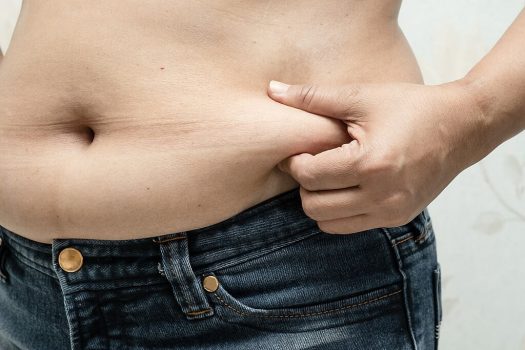 Pin
Pin Image from Wikimedia Commons
Starting your fat loss journey doesn’t have to begin with guilt or a long list of strict rules. The right mindset builds consistency, which is far more powerful than motivation. Begin by asking yourself why you want to burn fat—it must go beyond numbers on a scale. Is it energy, confidence, or better sleep? This mental clarity becomes your anchor when days get tough.
Creating a supportive space is just as vital. No need for a gym membership or equipment; your room, terrace, or hallway is more than enough. Keep a bottle of water nearby, wear clothes that feel good, and silence the outside noise. You’re not competing with anyone. You’re creating your own version of strength.
Using simple bodyweight routines and daily movement practices can truly burn fat fast no equipment required. These small, intentional actions are the building blocks of transformation. When the effort is personal, results tend to follow naturally—without forcing them into your life.
Table of Contents
1. Build a Routine That Fits Your Life
Consistency beats intensity when it comes to real fat loss. A quick burst of motivation might push you through a week, but a thoughtful routine carries you through months. The best routines are not the hardest—they’re the ones that feel natural in your schedule. You don’t need to carve out an hour. Even ten to fifteen minutes a day adds up in powerful ways.
Start with short workouts that target multiple muscle groups. Think squats, lunges, jumping jacks, planks, and mountain climbers. These movements build strength and elevate your heart rate without requiring any tools. Focus on form over speed and listen to your body. When your workouts are enjoyable, they stop feeling like a burden and become a habit.
Link your routine to a daily anchor something you do every day like brushing your teeth or making your bed. By attaching your workout to that habit, it becomes part of your rhythm. Fat loss begins to feel like a part of who you are not something you’re chasing.
2. Use High-Intensity Moves for Maximum Burn
Fat loss thrives on energy spikes and high-intensity movements give your body just that. These aren’t long, exhausting workouts. They’re short, controlled bursts that elevate your heart rate quickly. When done correctly, they keep your metabolism elevated even after you stop moving. That’s where the real magic happens in the recovery.
Burpees, squat jumps, high knees, and fast mountain climbers are great choices. They demand effort, not equipment. A 20-second burst followed by 10 seconds of rest repeated for four minutes can be more effective than a 30-minute walk. It’s not about how long you exercise—it’s how much power you put into it while you’re doing it.
Doing high-intensity sessions three to four times a week gives your body enough time to recover and still burn fat effectively. Leave a day in between for gentle movement or stretching. The balance keeps your system sharp and prevents burnout. High intensity, done wisely, is your fat-burning ally that respects your time.
3. Fuel Fat Loss with Smarter Eating Habits
Exercise without mindful eating is like sailing without wind. You won’t see much movement. Burning fat starts in the kitchen just as much as it does on the floor. The goal isn’t to starve—it’s to feed your body in a way that supports movement, recovery, and energy. You want food that works with your body, not against it.
Focus on whole, unprocessed meals. Fill your plate with vegetables, lean proteins, healthy fats, and complex carbohydrates. Instead of cutting entire food groups, pay attention to portion sizes and timing. Eating slowly, chewing properly, and listening for fullness cues trains your brain to stop overeating without harsh rules.
Drinking water before meals, avoiding sugar-loaded snacks, and having a consistent eating schedule help reduce cravings. You don’t need fancy diets or expensive ingredients. What your body really craves is balance and consistency. When your meals feel nourishing, your body starts shedding what it no longer needs—fat, bloating, and low energy.
4. Make Walking a Daily Non-Negotiable
Walking may seem simple, but it’s one of the most underrated tools for fat loss. It’s low-impact, easy on the joints, and doesn’t require warmups or prep. Walking increases circulation, improves digestion, and supports metabolism—all without exhausting your system. It’s not flashy, but it’s highly effective when done consistently.
Aiming for 7,000 to 10,000 steps daily can support fat loss without overwhelming your routine. Break it into short walks throughout the day—morning sunlight, post-meal strolls, or evening wind-downs. These little bursts keep your body in motion, reduce stress, and keep hunger in check by regulating blood sugar levels.
Adding variety keeps it engaging. Walk different routes, listen to music or podcasts, or go with a friend. The key is to walk with intention. When you treat walking as movement therapy instead of background noise, it becomes a mindful habit that shapes your body and clears your mind. It’s movement with meaning, not just mileage.
5. Use Your Own Bodyweight as a Gym
Your body is your best workout tool. It moves, balances, resists, and strengthens itself without needing machines or gadgets. When you train using bodyweight, you’re improving strength, flexibility, and control all at once. You also build muscle, and muscle is one of the most efficient fat-burning engines your body can have.
Basic bodyweight exercises like push-ups, squats, planks, glute bridges, and leg raises activate multiple muscles at once. This burns more calories in less time and helps shape your body in a natural, functional way. These moves are scalable beginners can go slow and controlled, while advanced trainers can add speed or duration.
Structure your sessions into circuits. For example, five moves for 30 seconds each, repeated three times with short rests in between. It keeps your heart rate up and your muscles engaged. The variety also makes it more enjoyable. When your body becomes your gym, fitness becomes part of your everyday space and routine.
6. Prioritize Sleep Like It's Part of Your Training
Fat loss is not just about movement and meals—it’s about recovery too. Sleep is often the missing piece in many fitness plans. When you sleep well, your body repairs muscle, balances hormones, and controls hunger. Without enough rest, even the best workouts and diets fall short.
Poor sleep increases cortisol, the stress hormone that tells your body to hold onto fat—especially around your belly. It also makes you crave sugary and fatty foods the next day. That means a tired brain often leads to emotional eating and skipped workouts. Quality sleep resets your system and helps your body use energy efficiently.
Set a consistent bedtime, dim the lights an hour before, and avoid screens. Even a short nighttime stretch or deep breathing can help you unwind. Treat sleep like your final workout of the day—a quiet ritual that strengthens everything you’ve done. With rest on your side, fat loss becomes smoother, more sustainable, and far less stressful.
7. Manage Stress Before It Manages Your Body
Stress is a silent weight that builds up in the body. It slows your progress and invites fat to stay, no matter how hard you train. When your stress levels stay high, your body stays on alert. This triggers hormonal responses that make fat loss harder, especially around the midsection.
Finding small ways to reduce stress can have a big impact. Deep breathing, journaling, stretching, or simply sitting quietly for five minutes can shift your body out of “fight or flight” mode. When your system feels safe, it becomes more willing to let go of stored fat. Emotional balance plays a crucial role in physical results.
You don’t need to meditate for hours or live in silence. It’s about creating pockets of calm in your daily rhythm. Replace harsh self-talk with kindness. Say no to things that drain you. Protect your peace like it’s part of your fitness plan—because it is. Stress may be invisible, but the weight it adds is real. Letting go lightens more than just your mind.
8. Keep Hydration at the Center of Your Day
Water is one of the most overlooked tools in fat loss. Staying hydrated supports every function in your body—digestion, circulation, metabolism, and even mood. When you’re dehydrated, your body struggles to burn fat efficiently. You might even mistake thirst for hunger, leading to extra snacking that adds up quickly.
Start your day with a glass of water. It wakes up your system and prepares your body to absorb nutrients from food. Keep a bottle with you throughout the day as a visual reminder to sip often. Add lemon or mint if plain water feels boring. The key is consistency, not force.
Drinking water before meals helps with portion control, while staying hydrated during workouts improves performance and recovery. Even your skin reflects your hydration levels. When your body feels nourished from the inside out, your energy rises and cravings drop. Fat loss becomes more effortless when your cells are supported by something as simple as water.
9. Track Progress Without Obsession
Measuring fat loss goes far beyond the scale. Weight can shift daily due to water, digestion, and hormones. Obsessing over numbers often leads to frustration. Progress shows up in how your clothes fit, how much energy you have, how well you sleep, and the strength you feel in your body. These are victories that no scale can measure.
Instead of tracking only weight, take photos every two weeks. Write a sentence or two about how you feel after each workout. Jot down how often you move, sleep, or choose nourishing meals. These patterns create a clearer picture of your journey. Progress is found in routines, not rapid drops.
Your journey deserves patience. Fat loss is not a race. It’s a gradual shift in how you treat your body and what you expect from it. Celebrate the non-scale wins—more confidence, better focus, stronger legs. The numbers will follow, but they should never define you. Let your progress reflect your commitment, not just your statistics.
10. Over-Exercising Can Harm Your Heart: Balance Is Key
Excessive workouts might seem like dedication, but they can stress your heart, especially if ignored.
Pushing too hard in the name of fat loss can backfire. While moderate exercise supports cardiovascular health, extreme or prolonged high-intensity workouts can increase the risk of heart rhythm issues, elevated cortisol, and even heart muscle damage, especially in those with undiagnosed conditions. People obsessed with fast results often ignore signs of overtraining like chest tightness, extreme fatigue, or irregular heartbeat.
If you’re combining intense workouts with low-calorie diets, your body can enter a stressed state. This affects hormone balance and heart function, possibly leading to dangerous outcomes. Fat loss is a gradual process, and your heart health must stay protected throughout the journey. Instead of going overboard, follow a structured plan with rest days, proper nutrition, and regular medical checkups if you’re ramping up intensity.
Prioritize smart training over extreme routines. Your body and your heart will thank you in the long run.
FAQs
Yes, you can. Bodyweight exercises like squats, push-ups, planks, and high knees are highly effective for fat loss. When paired with consistency, proper nutrition, and good sleep, these workouts help you burn calories and build lean muscle—all without a single piece of gym equipment.
Start with 4 to 5 days a week, mixing high-intensity workouts with light activity like walking or stretching. Your body needs time to recover, so including rest days is just as important. Quality movement done regularly works better than sporadic intense training.
Focus on whole, unprocessed foods like vegetables, fruits, lean protein, healthy fats, and complex carbs. Drink plenty of water and eat mindfully. Small, sustainable changes in your eating habits will fuel your workouts and help you lose fat naturally.
Everyone’s body responds differently. However, with consistent effort, many people begin noticing changes within 3 to 4 weeks. These changes might include increased energy, better sleep, looser clothes, and improved mood—signs that you’re on the right path.
Strict diets often lead to burnout. Instead, aim for balance and portion control. Eat when you’re hungry, stop when you’re full, and choose foods that support your energy. Sustainable eating habits lead to long-term fat loss and better overall health.





























